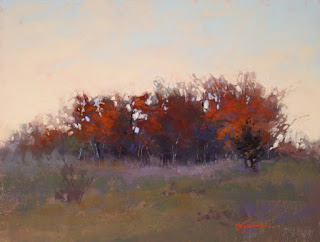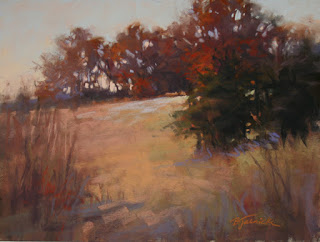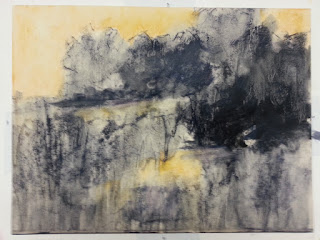 |
| Fading Autumn Light, pastel, 9x12 |
In my Thursday class this morning we covered the importance of greys in landscapes that contain vibrant colors, such as autumn landscapes. In order to make those vibrant colors jump off the painting, you need to balance them up against muted or grey hues. Otherwise, you just have lots of bright colors competing with each other, and end up with a very busy look, or often even more muddied color than if you used a variety of greys (i.e...grey-blue, grey-purple, etc.).
In my demo (above) I began with very muted hues and greyed versions of the bright autumn colors that would ultimately be added in later stages. Adding those bright hues is definitely a "less is more" practice...a little dab of a bright color up against a grey or muted hue goes a long way!
I wasn't completely pleased with composition on this one...things ended up a bit too centered for my taste. "Fading Autumn Light" may be considered for the chopping block, and possibly come back to life as a smaller size. Still thinking about it.
We'll probably do one more class that focuses on greys in the autumn landscape.
***
In my Monday class earlier this week, we focused on
edges. We also worked from an autumn scene, well, just because it IS autumn! The goal here was to exaggerate hard and soft edges in order to move the viewer's eye around to specific "resting spots" around the painting, carefully choosing where those spots are placed.
 |
| November Reds, pastel, 9x12 |
For my demo of "November Reds" I began setting up those hard and soft edges right from the start in the underpainting, shown below...
 |
| Underpainting for November Reds |









